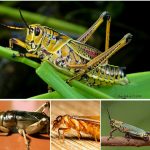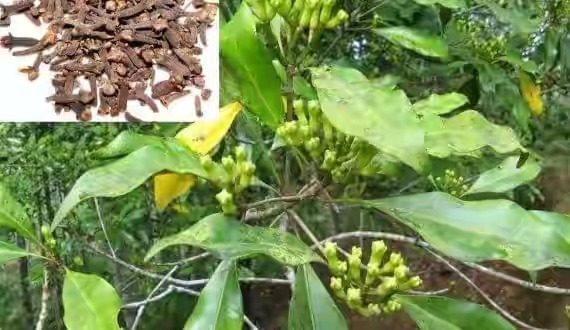THE MANY REASONS WHY YOU SHOULD EAT YOUR GRASSHOPPERS, CRICKETS AND OTHER EDIBLE INSECTS
The practice of eating insects is known as entomophagy. Many animals, such as spiders, lizards and birds, are entomophagous, as are many insects. People throughout the world have been eating insects as a regular part of their diets for millennia. Insect consumption is not a new concept in many parts of the world.
From ants to beetle larvae – eaten by tribes in Africa and Australia as part of their subsistence diets – to the popular, crispy-fried locusts and beetles enjoyed in Thailand,
IT IS ESTIMATED THAT EDIBLE INSECT-EATING IS PRACTISED REGULARLY BY AT LEAST 2 BILLION PEOPLE WORLDWIDE. MORE THAN 1 900 INSECT SPECIES HAVE BEEN DOCUMENTED IN LITERATURE AS EDIBLE, MOST OF THEM IN TROPICAL COUNTRIES. THE MOST COMMONLY EATEN INSECT GROUPS ARE BEETLES, CATERPILLARS, BEES, WASPS, ANTS, GRASSHOPPERS, LOCUSTS, CRICKETS, CICADAS, LEAF AND PLANTHOPPERS, SCALE INSECTS AND TRUE BUGS, TERMITES, DRAGONFLIES AND FLIES.
Edible insects inhabit a large variety of habitats, from aquatic ecosystems and farmed land to forests. Until recently, insects were a seemingly inexhaustible resource obtainable by harvesting from nature. However, some edible insect species are now in peril.
A number of anthropogenic factors, such as overharvesting, pollution, wildfire and habitat degradation, have contributed to a decline in many edible insect populations.
Climate change will likely affect the distribution and availability of edible insects in ways that are still relatively unknown. This publication includes case studies from several regions on the conservation strategies and semi-cultivation practices of rural people to protect insect species and their host plants.
Such efforts contribute to improved habitat conservation. THE ENVIRONMENTAL BENEFITS OF REARING INSECTS FOR FOOD AND FEED ARE FOUNDED ON THE HIGH FEED CONVERSION EFFICIENCY OF INSECTS. CRICKETS, FOR EXAMPLE, REQUIRE ONLY 2 KILOGRAMS OF FEED FOR EVERY 1 KILOGRAM OF BODYWEIGHT GAIN.
In addition, insects can be reared on organic side-streams (including human and animal waste) and can help reduce environmental contamination. Insects are reported to emit fewer greenhouse gases and less ammonia than cattle or pigs, and they require significantly less land and water than cattle rearing. NO RUGA REQUIREMENT! Compared with mammals and birds, insects may also pose less risk of transmitting zoonotic infections to humans, livestock and wildlife, although this topic requires further research.
INSECTS ARE A HIGHLY NUTRITIOUS AND HEALTHY FOOD SOURCE WITH HIGH FAT, PROTEIN, VITAMIN, FIBRE AND MINERAL CONTENT. The nutritional value of edible insects is highly variable because of the wide range of edible insect species.
Even within the same group of species, nutritional value may differ depending on the metamorphic stage of the insect, the habitat in which it lives, and its diet. For example, the composition of unsaturated omega-3 and six fatty acids in mealworms is comparable with that in fish (and higher than in cattle and pigs), and the protein, vitamin and mineral content of mealworms is similar to that in fish and meat. Most edible insects are harvested in the wild.
However, some insect species, such as bees and silkworms, have a long history of domestication because of the value of their products.
Insects are also reared in large numbers for the purposes of biological control (e.g. as predators and parasitoids), health (e.g. maggot therapy) and pollination.
The concept of farming insects for food is, however, relatively new; an example of rearing insects for human consumption in the tropics is cricket farming in the Lao People’s Democratic Republic, Thailand and Viet Nam.
In temperate zones, insect farming is performed largely by family-run enterprises that rear insects such as mealworms, crickets and grasshoppers in large quantities, mainly as pets or for zoos.
Some of these firms have only recently been able to commercialize insects(grasshoppers) as food and feed, and the part of their production intended for direct human consumption is still minimal.
A few industrial-scale enterprises are in various stages of start-up for rearing mass quantities of insects such as black soldier flies.
They are mainly for consumption as whole insects or to be processed into meal for feed.
Critical elements for successful rearing include research on biology, rearing condition control and diet formulas for the farmed insect species.
Current production systems are expensive, with many patents pending.
A major challenge of such industrial-scale rearing is the development of automation processes to make plants economically competitive with the production of meat (or meat-substitutes like soy) from traditional livestock or farming sources.
Insects are often consumed whole but can also be processed into granular or paste forms.
Extracting proteins, fats, chitin, minerals and vitamins is also possible. AT PRESENT, SUCH EXTRACTION PROCESSES ARE TOO COSTLY AND WILL NEED TO BE FURTHER DEVELOPED TO RENDER THEM PROFITABLE AND APPLICABLE FOR INDUSTRIAL USE IN THE FOOD AND FEED SECTORS.
The processing and storage of insects and their products should follow the same health and sanitation regulations as for any other traditional food or feed items in order to ensure food safety.
Because of their biological makeup, several issues should be considered, such as microbial safety, toxicity, palatability and the presence of inorganic compounds.
Specific health implications should also be considered when insects for feed are reared on waste products such as manure or slaughterhouse waste. Evidence of allergies induced through the ingestion of insects is scarce, but does exist. Some cases have been reported of allergic reactions to arthropods. INSECT GATHERING AND REARING AS MINI-LIVESTOCK AT THE HOUSEHOLD LEVEL OR INDUSTRIAL SCALE CAN OFFER IMPORTANT LIVELIHOOD OPPORTUNITIES FOR PEOPLE IN BOTH DEVELOPING AND DEVELOPED COUNTRIES.
In developing countries, some of the poorest members of society, such as women and landless dwellers in urban and rural areas, can easily become involved in the gathering, cultivation, processing and sale of insects.
These activities can directly improve their own diets and provide cash income through the selling of excess production as street foods. Insects can be directly and easily collected from nature or farmed with minimal technical or capital expenditure (i.e. for basic harvesting/rearing equipment).

Rearing insects may also require minimal land or market introduction efforts, as insects already form part of some local food cultures. Protein and other nutritional deficiencies are typically more widespread in disadvantaged segments of society and during times of social conflict and natural disaster. BECAUSE OF THEIR NUTRITIONAL COMPOSITION, ACCESSIBILITY, SIMPLE REARING TECHNIQUES AND QUICK GROWTH RATES, INSECTS CAN OFFER A CHEAP AND EFFICIENT OPPORTUNITY TO COUNTER NUTRITIONAL INSECURITY BY PROVIDING EMERGENCY FOOD AND BY IMPROVING LIVELIHOODS AND THE QUALITY OF TRADITIONAL DIETS AMONG VULNERABLE PEOPLE. GATHERING AND FARMING INSECTS CAN OFFER EMPLOYMENT AND CASH INCOME, EITHER AT THE HOUSEHOLD LEVEL OR IN LARGER, INDUSTRIAL-SCALE OPERATIONS.
In developing countries in Southern and Central Africa and Southeast Asia, where demand for edible insects exists and where it is relatively easy to bring insects to market, the process of insect gathering, rearing and processing into street foods or for sale as chicken and fish feed is easily within reach of small-scale enterprises. With only a few exceptions, international trade in insects for food is insignificant.
The trade that does exist to developed countries is often driven by demand from immigrant communities or because of the development of niche markets that sell exotic foods.
Border trade in edible insects is significant, mainly in Southeast Asia and Central Africa.
Please eat grasshoppers, crickets, termites and other insects today! I remember we hunted grasshoppers and other edible insects while in the secondary school.
These are the thoughts of:
Sa’eed Halilu Bawa
Senior Lecturer (Associate Professor) at University of the West Indies, St. Augustine Campus, Trinidad.
Studied Food and Nutrition Sciences, Dietetics at Kaduna Polytechnic, Nigeria; Warsaw University of Life Sciences, Poland.
























